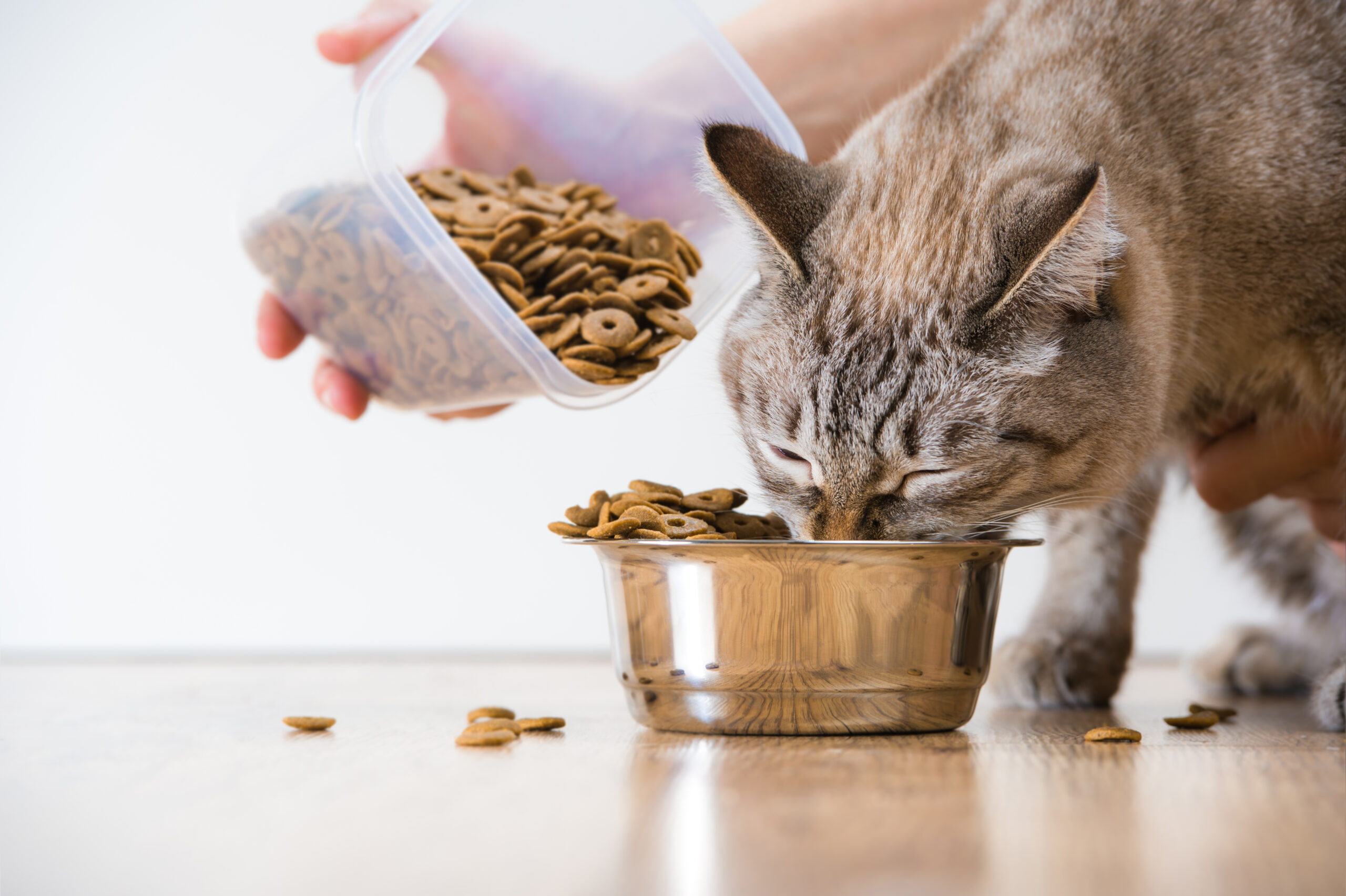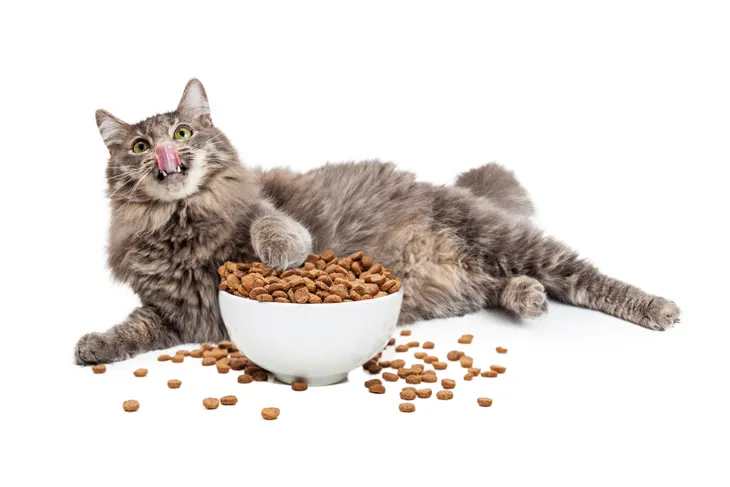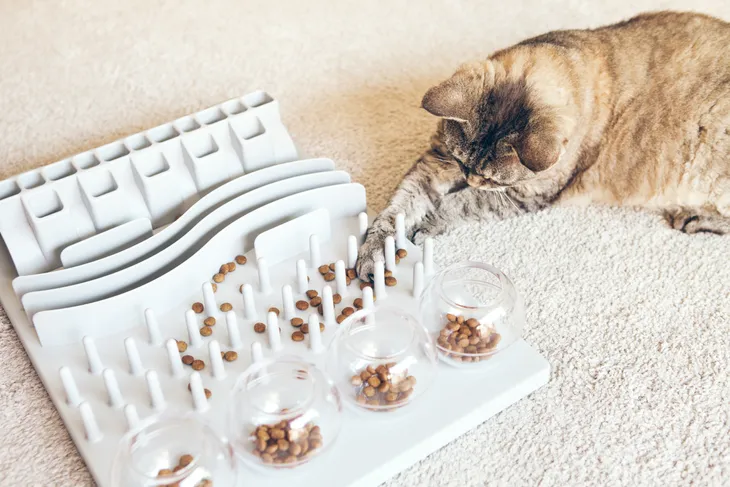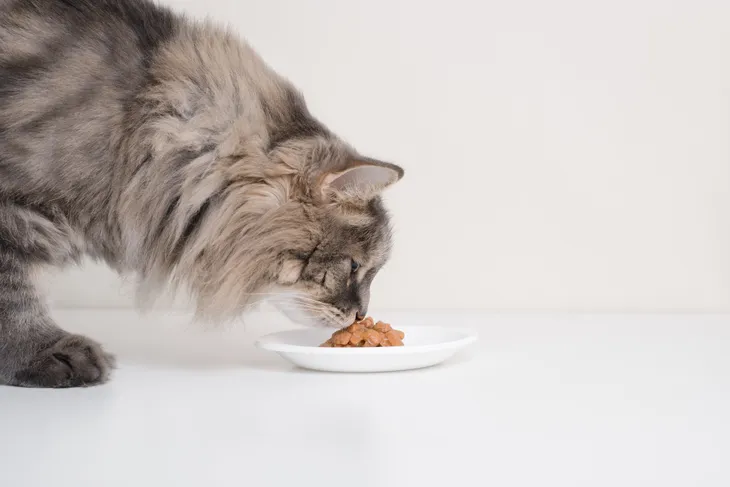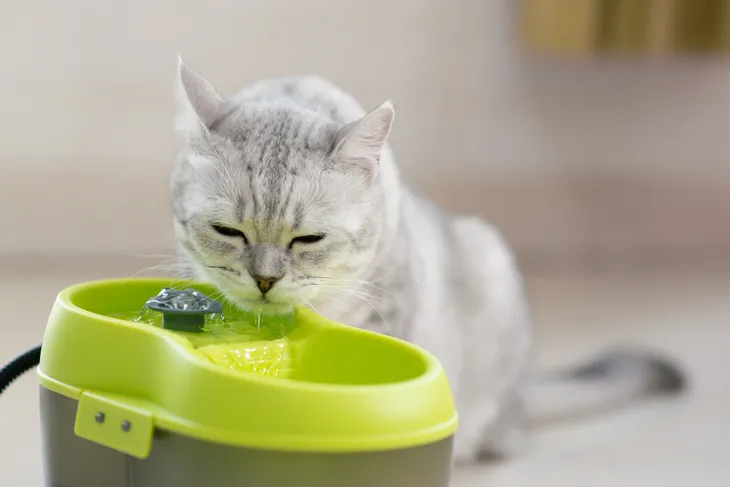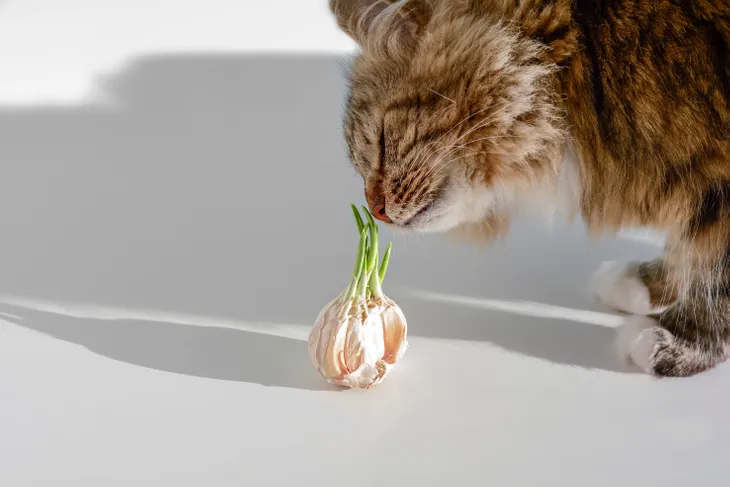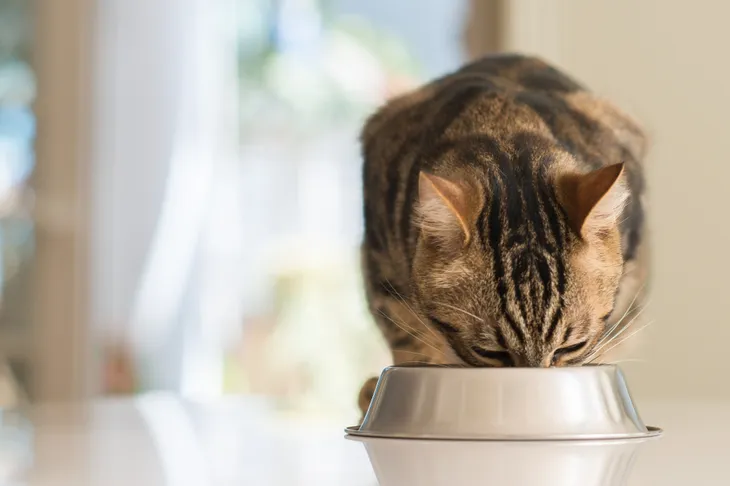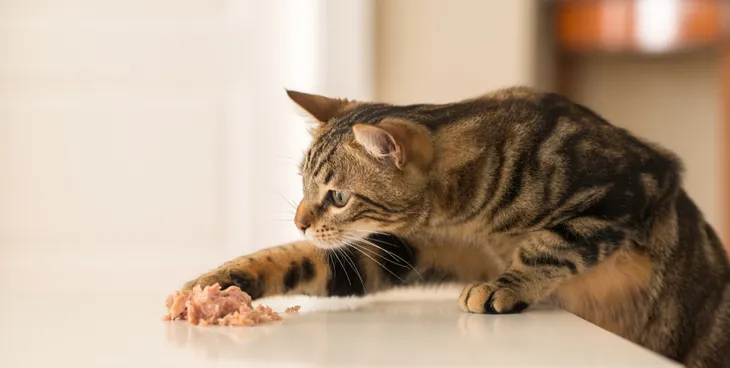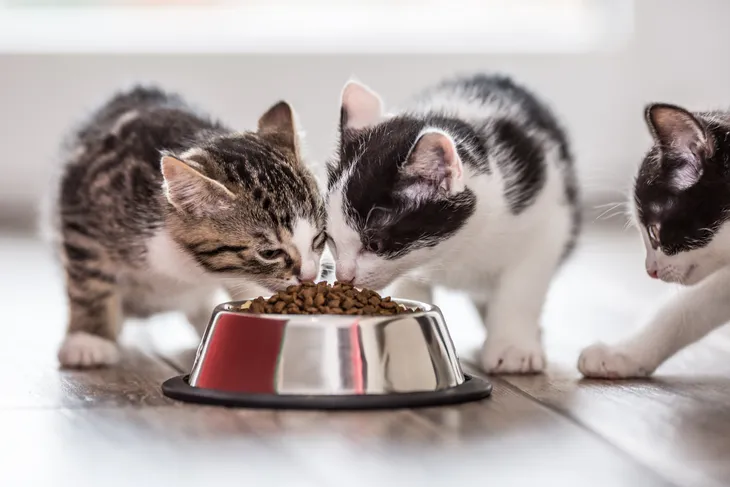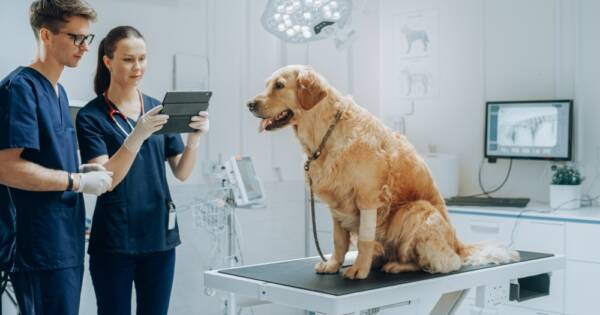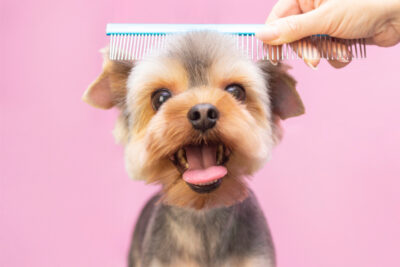- Even though cat owners love their pets, they still sometimes make mistakes when it comes to feeding!
- The most common mistakes involve overfeeding, nutritional deficiencies, and/or offering foods they shouldn’t be eating.
- Prior to getting a cat, always consult a veterinarian to discuss their specific dietary needs.
While it’s not the hardest or most daunting task of being a pet owner, particularly when it comes to cats, feeding is an important responsibility. How often, the amount, and what we feed our cat has a major impact on their overall health. This is why it’s so vital that we understand our cats dietary needs and a surprising amount of pet owners don’t!
Whether they are a picky eater or known to eat everything in sight, there are a few important rules to follow when it comes to feeding your cat. Even for longtime feline lovers, some of these might actually come as a surprise. Let’s take a look…
Too Much Food
One of the main reasons people like having cats is because they tend to be a little more independent than other animals. As a result, owners might enjoy leaving their cats food out and encourage a graze all day approach to feeding. This is actually a big ‘no no.’ Even if your cat does not appear to be overweight, leaving a full bowl of food out all day is one of the most common mistakes cat owners make.
If you’re leaving their food out because they are a picky eater and you’re worried they won’t eat otherwise, Fetch by WebMD reassures that even the choosiest of cats will eventually eat if their food is out only at certain times. The healthiest approach to take when feeding a cat is to start with less than the daily amount suggested on the bag or can. Aim for meals (preferably two or three a day), not a buffet. This will help get them on a schedule and you’ll get a good idea of how much or little they are actually eating.
No Enrichment at Mealtime
By nature, cats are predators who hunt for their food. Obviously for most household cats, this isn’t their reality since we provide all their meals to them in a pretty little dish. But this level of service doesn’t negate the fact that hunting is first and foremost their natural instinct.
To cater to these instincts, it’s a good idea to make mealtime more mentally and physically stimulating, says Marilyn Krieger, a certified cat behavior consultant and owner of The Cat Coach in the San Francisco Bay area to Pet Coach. To help with this, get some food puzzles. Not only does it make them work for their food, but it also slows them down which can help with overconsumption.
Dry Food Only
When it comes to cat food options there are two main options: dry and wet food. Some people might only offer their cat dry food, but Lisa A. Pierson, DVM, a California veterinarian focused on feline medicine and nutrition (and creator of CatInfo.org) tells WebMD that’s a big mistake. While the cats we have in our homes today are a far cry from their desert-dwelling ancestors, that natural heritage is still there. As such, cats have a low thirst drive.
“We know that a cat’s sensitivity to thirst is blunted compared to a dog,” says Linda P. Case, MS, author of The Cat: Its Behavior, Nutrition, and Health to the same source. “They don’t voluntarily drink water like a dog would.” In addition to having a low thirst drive, cats produce highly concentrated urine. So a diet that is low in liquids puts them at risk for urinary tract problems. If they are presenting these problems, it is often recommended they go on a water-rich diet, says Pierson.
To be proactive and not reactive, cat owners should make an effort to include wet food in their cats diet so that they know they are getting enough water.
Not Enough Water
From what we’ve learned so far, cats need liquid in their diet. Not only from wet food, but also directly from the source — their water dish! According to ASPCA experts, 60 to 70-percent of an adult cat’s body weight is water. A lack of water in their diet could cause serious illness or even be fatal.
To encourage your cat to drink more water, keep a close watch on their behavior. “Pay attention to where the cat likes to be so that there’s water there,” says Case to WebMD for Pets. “And be aware that some cats prefer running water; others can detect the taste of chlorine in tap water so you might want to buy bottled water for them.” If you’re having trouble getting your cat to drink water, WebMD provides some helpful tips from The Veterinarians’ Guide to Natural Remedies for Cats which suggests adding some crushed catnip leaves to a bowl of fresh water.
Switching Foods Too Rapidly
It is okay to offer your cat some variety in their food, but try not to make any drastic changes too quickly. If you need to switch their food for whatever reason, do it slowly over time. Blend the two foods together or offer small servings of the new food. From there, increase the serving size gradually.
Rushing this process without letting their digestive system adapt puts them at risk for gastrointestinal upset which can lead to vomiting or diarrhea. This is confusing for the cat, as well as the owner who might think their reaction is a result of the new food being bad, when it really had to do with them offering it up too quickly.
Garlic for Tapeworms
According to WebMD for Pets, tapeworms are the most common parasite found inside adult cats. They are usually caused by a cat swallowing a flea. While they aren’t life-threatening, tapeworms can wreak havoc on a cat’s health. If left untreated, they can cause weight loss, abdominal discomfort, vomiting, and many other issues. The source also notes that a major misconception about this health issue is that garlic can somehow magically cure it.
Some cat owners have been known to try and treat this issue by adding garlic to their cats food. “There is no proof that garlic prevents any parasitic infestation, including intestinal worms or fleas,” says Joe Bartges, DVM, PhD, DACVIM, DACVN, professor of medicine and nutrition, the Acree Endowed Chair of Small Animal Research, in the College of Veterinary Medicine, at the University of Tennessee to WebMD. What’s worse is that if a cat is given too much garlic, it can actually cause even more damage by destroying their red blood cells. If you suspect your cat has tapeworms, take them to a veterinarian.
Not Enough Meat
A cat owner who is vegan or vegetarian might want to put their cat on the same diet, but what’s right for us, isn’t necessarily good for them. According to Fetch by WebMD, cats are natural carnivores which means they need meat in their diet. Their stomachs were digest meat and a vegetarian diet won’t give them the proper nutrients that they need. For example, cats who do not get enough amino acid taurine, which is found in meat, are more susceptible to heart failure.
Fetch by WebMD says the same goes for feeding a cat too much meat or a raw diet. “No studies have shown that raw animal products are better than any other types of cat food (canned, dry, or home cooked) with one exception: usually raw meats are slightly easier for them to digest than cooked meats.” Raw meats pose many risks, too. Before putting your cat on a raw food diet, consult a veterinarian.
Offering Food Off The Table
While it’s tempting to share a delicious meal with any begging pet, some human foods aren’t healthy for cats. Never feed a kitty grapes, raisins, onions, nuts, chocolate, garlic, or uncooked bread dough. Other dangerous foods are raw meat, eggs, and bones, says Fetch by WebMD.
Raw meat and eggs can contain harmful bacteria while bones present a choking hazard. Not to mention the shock to their system from eating foods they aren’t used to ingesting could cause them to suffer digestive issues. The results could be even worse for cats with sensitive digestive systems. They could get pancreatitis which can be fatal.
Feeding Cats Together
Owning more than one cat can provide good companionship, not only for the pet owner but also the other cat. However, it can can also cause unnecessary stress during meals. According to Pet Coach, pet owners with multiple cats often make the mistake of feeding their cats together. Don’t put their bowls right next to each other. “Although household cats who are fed next to each other have no choice and have to eat in those circumstances, it can be stressful and cause eating disorders including stomach upsets, overeating and not eating,” says Krieger.
Make sure to provide each cat with their own bowl and place them a good distance from each other. Depending on the cat’s personality, they might even need to be in separate rooms. You should also refrain from placing the bowls near their litter boxes. Just like us, cats don’t want to smell excrement while they’re eating.
Feeding Raw Fish or Milk
We’ve all seen the cute image of a kitten drinking from a saucer of milk, but it’s actually very misleading! Most cats actually don’t have the right enzymes to properly break down lactose (the sugar in milk). This means drinking cow’s milk could make them very sick.
Another common myth is that cats love to eat raw fish. Even if some cats do, most experts advise against it. “A diet too rich in raw fish can destroy vitamin B1, causing muscle weakness, seizures, or brain damage,” writes WebMD for Pets.
Making Cat Food From Scratch
Society today is much more focused on eating as clean as possible. This means moving away from pre-packaged or processed foods and making more meals from scratch. While this is certainly a good mindset for us, it’s not necessarily the best approach for feeding our pets. WebMD for Pets discourages people from making their own cat food because it will likely be nutrient deficient and unbalanced.
Despite good intentions, homemade cat food often lacks the right amount of calcium. People don’t realize “that a cat would be eating both the meat and bones of their prey, which provides a proper calcium-to-phosphorus ratio,” writes the source. On the other hand, providing too much of something like tuna, liver, or liver oil could lead to a vitamin A toxicosis. This causes bone and joint pain, brittle bones, and dry skin.
Not Consulting Your Veterinarian
No matter how much experience a pet owner has with cats, every animal is different. A good rule of thumb to follow after getting a new animal is to take them for evaluation at a veterinarian. Part of this visit should be spent talking about their nutritional needs. While pet food labels are helpful, Pet Coach says a lot of the research to formulate these labels is done on pets that aren’t spayed or neutered who may have higher metabolic requirements.
Keep in mind is that every cat’s needs are different depending on their life stage or any existing health conditions. “Kittens have high caloric requirements due to the amount of energy they need for growth,” says Dr. Sasha Gibbons, an associate veterinarian at Just Cats Veterinary Hospital in Samford, Connecticut when talking to Pet Coach. “Therefore, feeding a kitten diet to cats under nine months of age is imperative.” To learn how to properly feed your cat, consult your veterinarian.
